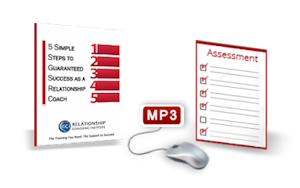 Relationship issues can generally be divided into “solvable” and “unsolvable” problems.
Relationship issues can generally be divided into “solvable” and “unsolvable” problems.
Solvable relationship problems are generally related to your Needs. The most common relationship needs are emotional and functional. Your emotional needs are what you need to feel loved. Your functional needs are what you need for your life to work in a way that fits for you, as determined by your Vision. Needs are negotiable, and there are many ways to meet a need. However, the test for a need is that if it were not met, you would experience an issue EVERY time, so needs are very important, and are the difference between being happy or unhappy in a relationship.
Unsolvable relationship problems are generally related to your requirements. Whether you know them or not, you do have non-negotiable requirements that MUST be met for a relationship to work for you. If ONE is missing the relationship will not work for you. Requirements are the relationship breakers, but we often confuse them with needs and wants, and treat them as equal. For example, a couple will argue about having children or not (which is probably a requirement for at least one partner), and will argue about who forgot to pay the gas bill (a functional need), and they both seem pretty stressful and interfere with the relationship working. The difference is that paying bills is negotiable and there are many ways to work that out, where having children is pretty non-negotiable for most people, who either want children or don’t, and if they are not in alignment they have an unsolvable problem.
Here are 4 Alternatives For Solving An Unsolvable Problem:
- Stay in the relationship and be unhappy.
Many couples stay together and are miserable for many years. This option was more prevalent in past generations. Today, most people expect and need personal fulfillment, and find it impossible to stay in a situation that doesn’t work for them after time and effort has failed to fix the problem
- Leave the relationship.
This is the most common alternative chosen, and the reason for our high divorce rate.
- Let go of the problem.
It is possible to simply let go of the problem. People do this when they realize the relationship is more important than their requirement, or if it is an area of growth. Requirements are core to who you are and the life and relationship you want, and it is pretty rare to be able to let go of one. An example of letting go of a requirement as an area of growth might be a partner who could not accept their partner’s weight gain, deciding to let go of needing them to be thin and accepting them the way they are.
- Compromise.
When you compromise you give up some of what you need in order to meet in the middle. This can be a challenge with Requirements, which tend to be pretty black and white. For example, how do you meet in the middle about children? You either have them, or you don’t. This option tends to work better with the support of a Relationship Coach to help the couple examine the options creatively and objectively and negotiate something that works for both partners, and is sustainable in the long run.
Note: The above is an excerpt from our new book Should I Stay or Should I Go (see below)
|
| Click here to download in digital format |
Click here to download to your KIndle e-reader |
 |
 From start to finish this book is filled with life changing information that will be a great help to anyone who reads it. Should I Stay or Should I Go is packed with insight, thoughts and considerations that could be easily overlooked when making this decision. No matter what stage of a relationship, there is something in this book for everyone. I have been waiting a very long time for a book that would address this question and Mr. David Steele you nailed it…job well done. – Donna Dright-Ursin, Life and Relationship Coach, La Place, LA From start to finish this book is filled with life changing information that will be a great help to anyone who reads it. Should I Stay or Should I Go is packed with insight, thoughts and considerations that could be easily overlooked when making this decision. No matter what stage of a relationship, there is something in this book for everyone. I have been waiting a very long time for a book that would address this question and Mr. David Steele you nailed it…job well done. – Donna Dright-Ursin, Life and Relationship Coach, La Place, LA |
|
|
the digital version is included for immediate access $12.95  |
 |


 The Communication Map ebook
The Communication Map ebook

 The Communication Map
The Communication Map